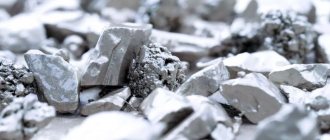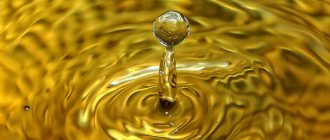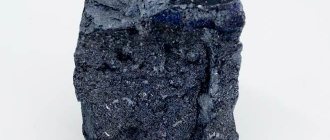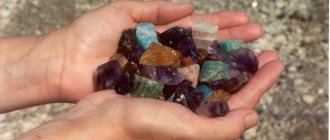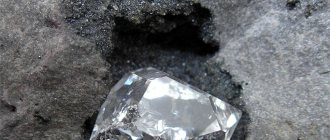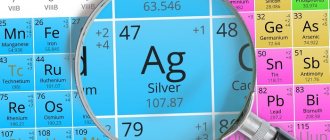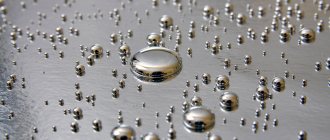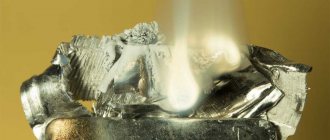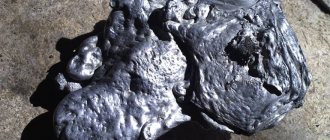Post updated: Oct 8, 2020
Antonio de Ulloa (Spanish surveyor and astronomer) discovered a deposit of platinum during excavations in Peru in 1740; he was interested in the unusual color and hardness of the metal. He was the first to import the future precious metal to Spain for detailed study.
In the 18th century, Spanish scientists discovered the following properties of platinum:
- harder than gold and silver;
- resistant to chemical acids;
- reaction with oxygen produces platinum oxides (reddish brown, brown and black);
- easily alloyed with gold;
- Due to its plasticity, it can be easily forged.
From Spanish platina is a disparaging “little silver” from plata (silver). Indeed, platinum’s color is very similar to silver metal. And the prejudice is due to its low value in Spain - the government banned the import of platina into the country, because jewelers began to mix noble gold with this valueless white metal, and sold the products as gold. All platinum reserves were dumped into the sea under the strictest supervision.
About platinum mining
In the XVIII-XIX centuries. In Europe, platinum, taking into account its special properties, was used only in the creation of chemical equipment and as catalysts. The white metal mined in America at that time was more than enough for such needs.
Platinum mining by "ploughman" in the early 19th century.
On the territory of Russia in 1819, the future precious metal was first discovered in the Urals. Development of the deposit began, and in 1824 platinum mines were discovered in the Nizhny Tagil mining district and in the valley of the Is River (Isovskaya placer). Platinum mining in the Urals has made Russia the world leader in production of this white metal.
General information and areas of application of metal
Platinum is a noble metal, resistant to various acids and alkalis, as well as vacuum, which makes it possible to use it in the creation of space technology. Platinum has the following properties:
- color - depends on the variety;
- hardness on the Mohs scale - 3.5;
- density - 21.9-21.45 g/cm³;
- boiling and melting points - 3825 and 1768 degrees, respectively;
- ductility is high and can be forged well.
The sufficient hardness of platinum makes it possible to make jewelry of any shape and size from it. The work is labor-intensive and difficult, but the excellent subsequent operation fully compensates for this. Unlike silver and gold, which require additional components to ensure strength, platinum alloy is self-sufficient.
At room temperature it reacts with aqua regia. Can dissolve slowly in liquid bromine and heated concentrated sulfuric acid. Platinum acts as a catalyst for many chemical reactions, and its properties and composition remain the same.
The degree of oxidation of a metal directly depends on how freely oxygen reaches the surface and what its pressure is. If minor metals are located on the surface of platinum, then oxidation reactions will proceed slowly, whereas pure material will oxidize the most and most quickly.
Platinum nugget
In the modern world, platinum is in great demand. It is used in the following areas:
- automotive industry - production of catalytic exhaust gas converters;
- electronics - creation of high-precision and optical instruments;
- petrochemical industry - production of high-octane gasoline, rubber, monomers and other synthetic materials;
- medicine - production of devices and instruments, hydrogen peroxide, antibacterial and antiviral drugs. It can also be used in the treatment of oncology;
- space industry and nuclear energy.
More than half of all mined precious metal is spent on meeting the needs of all these industries. For the jewelry market, only 30% of platinum remains and 10% is cash investment.
Platinum mining methods
The method of mining platinum largely depends on the type of deposit. If the platinum-bearing layers do not lie too deep or on the surface, then the “open” method of its extraction is used, but if the horizon (layer) is located very deep, the “closed” method is used. The technological cycle of platinum mining begins with geological exploration of the proposed deposit.
- With the open method, a small layer of soil is removed, which lies directly on the platinum-containing placer.
- The closed method involves drilling, laying explosives and building deep shafts.
To mine platinum in one way or another, modern technologies are used, and many types of quarry equipment are also used.
How is platinum mined in nature?
Extraction of precious metals using artisanal methods is typical for ordinary people eager to find treasure/treasures. Residents of mountainous regions often search for rich rocks on their own and, using improvised means, try to extract fragments of precious metals (platinum).
One such method is to extract platinum from stone using regular iodine :
First, those on which white veins or inclusions are clearly visible are selected from a pile of stones. Then iodine is drawn into a regular pipette. The reaction of iodine with gold or platinum produces the green color of this substance. If, when the iodine dries, a green coating remains on the surface of the stone, there is the presence of a precious metal.
Platinum is also mined from metal ores. For example, from sulfide copper-nickel or nickel. But during their processing, part of the platinum is lost along with production waste through the enrichment of copper or nickel, so they try not to use this process due to its labor intensity.
How to extract platinum from a catalyst?
You can extract platinum from a car catalyst with your own hands using the “leaching” technology. It is recommended to use an imported device, since gold is often used in the production of domestic cars. “Leaching” involves wetting the catalyst with a solution of high concentration hydrochloric and nitric acids. The process must be carried out at 100 degrees Celsius. After wetting, the device is washed several times, resulting in a mixture containing white metal.
The disadvantage of such an operation is the loss of a certain amount of platinum. It is necessary to take into account the fact that with a long service life of the catalyst, less and less precious deposits remain in it.
Extraction of platinum from radio components
The process of extracting platinum from recycled materials (radio components, electrical installation elements, etc.) at home consists of several stages:
- Dissolution - Selected contacts are brought to a boil in dilute hydrochloric acid to dissolve non-ferrous metals.
- Precipitation - after dissolution, the filtered raw material is immersed in pure hydrochloric acid so that the non-ferrous metal is completely dissolved. Concentrated nitric acid is added dropwise to complete the dissolution cycle. A solution of ammonium chloride is carefully introduced into the resulting mixture of platinum chloride to obtain ammonium hexachloroptatinate.
- Preparation of spongy platinum - the solution is filtered, the resulting yellow salt is again filled with ammonium chloride under vacuum. After such filtration, a precipitate remains; it is dried for several days in the sun or by low heat. The dried sediment is calcined at 800 degrees. The resulting spongy platinum is smelted, poured into a mold and allowed to cool until it becomes an ingot (find out at what temperature platinum melts).
We must not forget that such a process is very dangerous due to the high content of toxic substances in radioelements. Therefore, it is necessary to follow the same safety rules as when working in a laboratory.
How platinum is mined, video
Platinum, white gold of the Urals.
The content of other platinum metals (Rh, Ir, Ru, Os) in the ore is tens and hundreds of times less than the amount of Pd and Pt. Copper-nickel sulfide ores contain numerous minerals of platinum metals, mainly intermetallic compounds of Pd and Pt with Bi, Sn, Te, As, Pb, Sb, solid solutions of Sn and Pb in Pd and Pt, as well as Fe in Pt, arsenides and sulfides of Pd and Pt.
Placer deposits of platinum ore are represented mainly by Mesozoic and Cenozoic eluvial-alluvial and alluvial placers of platinum and osmic iridium.
Industrial placers are exposed on the surface (open placers) or hidden under 10-30 m of sediment (buried placers). The largest of them are traced for tens of kilometers in length, their width reaches hundreds of meters, and the thickness of productive metal-bearing layers is up to several meters; they were formed as a result of weathering and destruction of platinum-bearing clinopyroxenite-dunite and serpentine-harzburgite massifs.
Industrial placers are known both on platforms (Siberian and African) and in eugeosynclines in the Urals, Colombia (Choco region), Alaska (Goodnews Bay), etc. Minerals of platinum metals in placers are often intergrown with each other, as well as with chromites, olivines and serpentines.
Figure 1. “Native platinum”
How is platinum mined in Russia?
Platinum mining using the example of the richest deposit in Russia - the Konder mine, located in the Khabarovsk Territory in the Far East (the Amur prospecting team):
- The development of the field began in 1984.
- Production area is classified.
- Number of personnel – 1400 people.
- Extraction – platinum group metals.
- Volumes – over 150 tons of precious metals for the entire period of operation of the mine.
- Area of application: automotive industry in Russia, medicine and jewelry production.
A complex technological process is the extraction and production of pure platinum. To get to the platinum sand deposits, workers remove 18-20 meters of waste rock. First they blow it up, then they take it out of the site in dump trucks. The sand containing the precious metal is then washed with a powerful stream of water.
There is only 1 gram of platinum per 1 m3 of sand.
Before mining the rock, miners wash the sand by hand - if grains of white metal are found in the washing tray, then only then do they call in the equipment.
The semi-finished product from the washing machines goes to the processing plant, where pure precious sand is obtained.
Platinum production at this deposit per day is up to 30 kg, and per year - more than 3.5 tons. In order not to reduce such productivity, the management of the enterprise puts into operation high-performance machines and equipment, as well as advanced technologies developed on the basis of leading domestic and foreign centers of the mining industry.
Platinum ores
Platinum ores are natural mineral formations containing platinum metals (Pt, Pd, Ir, Rh, Os, Ru) in concentrations at which their industrial use is technically possible and economically feasible.
This means that accumulations of platinum ore in the form of deposits are very rare. Deposits of platinum ore can be primary and alluvial, and in composition - actually platinum and complex (many primary deposits of copper and copper-nickel sulfide ores, alluvial deposits of gold with platinum, as well as gold with osmic iridium).
Platinum metals are distributed unevenly within platinum ore deposits.
Their concentrations vary: in primary platinum deposits from 2-5 g/t to units of kg/t, in primary complex deposits - from tenths to hundreds (occasionally thousands) g/m; in placer deposits - from tens of mg/m3 to hundreds of g/m3. The main form of occurrence of platinum metals in ore is their own minerals, of which about 90 are known.
The most common minerals are polyxene, ferroplatinum, platinum iridium, nevyanskite, sysertskite, zvyagintsevite, paolovite, frudite, sobolevskite, plumbopalla-dinite, sperrylite. Of subordinate importance is the dispersed form of occurrence of platinum metals in platinum ore in the form of an insignificant impurity contained in the crystal lattice of ore and rock-forming minerals.
Primary deposits of platinum ore are represented by bodies of platinum-bearing complex sulfide and platinum chromite ores of different shapes with massive and disseminated textures.
These ore bodies, genetically and spatially closely related to intrusions of mafic and ultramafic rocks, have an advantage. igneous origin. Primary deposits of platinum ores are found in platform and folded areas and always gravitate towards large faults in the earth's crust. The formation of these deposits occurred at different depths (from 0.5-1 to 3-5 km from the surface) and in different geological eras (from the Precambrian to the Mesozoic).
Complex deposits of copper-nickel sulfide platinum ores occupy a leading position among the raw materials sources of platinum metals.
The area of these deposits reaches tens of km2, while the thickness of industrial ore zones is many tens of meters. Their platinum mineralization is associated with bodies of solid and disseminated copper-nickel sulfide ores of complexly differentiated gabbro-dolerite intrusions (deposits of the Norilsk ore district in Russia, Insizwa in South Africa), stratiform intrusions gabbro-norites with hyperbasites (deposits of the Merensky horizon in the Bushveld complex of South Africa and Monchegorskoye in the CIS), layered massifs of norites and granodiorites (Sudbury copper-nickel deposits in Canada).
The main ore minerals of platinum ore are pyrrhotite, chalcopyrite, pentlandite, cubanite. The main metals of the platinum group of copper-nickel platinum ores are platinum and palladium, which predominates over it (Pd: Pt from 3: 1 and higher).
Where is platinum mined in Russia?
Russia ranks second in the world after South Africa in deposits where platinum is mined in large quantities. Not only in the Khabarovsk Territory, but also at large mines in Taimyr, the Primorsky Territory and the Kola Peninsula, deposits of platinum-containing ores are being developed.
Development of platinum deposits in the Urals
About 250 tons of precious metal were mined in the Urals from 1824 to 1922. The Ural deposits are rightfully considered unique to this day, since it was here that nuggets of incredible size were mined. At the Isovskoye deposit, prospectors found the largest (7.86 kg) known nugget of pure platinum, the “Ural Giant,” which is stored in the Diamond Fund of Russia.
At the beginning of the 20th century, the Isovsky and Nizhny Tagil deposits produced about 80% of the total world volume of platinum. But by the middle of the last century, platinum deposits in the Urals were almost completely depleted, and production was reduced to a minimum. Today, only placer residual deposits continue to be developed here.
Platinum deposits on the Kola Peninsula
The primary platinum deposit near Monchegorsk on the Kola Peninsula was discovered by geologists relatively recently. Research into the rock for the presence of platinum has been conducted here since 2022. If development, which will begin this year (2020), confirms the presence of platinum deposits, this deposit will be considered the richest in Russia.
According to geologists, the 3 km area contains several platinum-bearing strata, on which great hopes are pinned.
Types of deposits
Platinum originates both on the surface of sediments and in their depths. The largest industrial deposits of metal reach a length of several tens of kilometers and a width of several hundred meters. The material is mined mainly in complex deposits. Platinum veins, like gold, can be found in igneous igneous rocks.
There are two types of deposits in which platinum ingots and particles are mined:
- indigenous/primary;
- loose/secondary.
In primary, platinum is used as a secondary product in the process of mining copper, nickel and sulfides. If a platinum vein is found, it usually goes deep into the earth's crust.
Platinum deposit
When the bedrock deposit is destroyed, the platinum deposits crumble. In this case, they are found nearby in the form of plates, small fractions or sand. This element is very rarely found in quartz vein formations.
What other countries produce platinum?
On an industrial scale, platinum group metals are mined in only four countries. The world's largest platinum deposits are located in South Africa.
Platinum production in the world by country looks like this (see figure):
Platinum mining in China
In the early 2000s, China began to develop platinum deposits. The Jinchuan nickel deposit and Jinbaoshan were considered the largest in China. The content of pure precious metal was only 1.5 grams per ton of developed rock - very little compared to the indicators of the leading countries.
In terms of platinum production, China accounts for 3% of world volumes, sharing them with Colombia and Finland (see figure above), so it can rather be called not a miner, but a consumer of this metal. Today, almost 45% of global consumption of platinum jewelry occurs in China.
Platinum mining in Africa
The world's largest and inexhaustible deposit of platinum group metals is located in the Republic of South Africa (RSA). The gigantic Bushveld complex deposit is estimated to be about 2 billion years old. A third of all platinum in the world is mined here - 140-150 tons annually. The complex consists of three layers of platinum deposits with a length of 1500 km: Merenski, UG2 and Platrif. The deposits of platinum-containing ore in this complex will be enough for more than 10 years of extraction of the purest platinum.
The Bushveld complex was discovered by Hans Merensky (a South African, geologist by training) in 1924.
Another southern African country, Zimbabwe, produces 11 tons per year, which is a good indicator, and puts it among the world leaders in platinum mining. A joint venture between Zimbabwe and Russia, Ruschrome Mining, is developing the Darwendale deposit, where, according to geologists, platinum deposits will allow the extraction of about 30 tons per year.
Platinum mining in Mongolia
The small but resource-rich country of Mongolia, a former republic of the USSR, has large reserves of coal, gold, various metal ores, as well as good deposits of alluvial platinum.
At the moment, negotiations are underway with companies of world leaders in the extraction of minerals, including the discovery and development of deposits of platinum group metals.
Peter Reus (Russian geologist) in 2014, traveling through Mongolia, discovered an accumulation of ore particles in the water of Lake Bayan Nuur, in which, according to the analysis, pure platinum was identified. “In the annals of world platinum mining, there has never been such a rich and such accessible placer,” according to the geologist, the layers of placer platinum lie almost under the entire lake valley and are of great value for the economic development of the country.
Platinum deposits in Kazakhstan
The extraction of platinum group metals in the Republic of Kazakhstan is carried out by isolating precious metal fragments from complex ores during the development of gold deposits.
Platinum deposits in the USA and Canada
An employee marks a rock surface at a platinum mine.
At this mark, the team will drill into the rock. Canada. Up to 5 tons of platinum are mined in Canada per year. The development of deposits of platinum group metals began already in 1908 and still allows Canada to maintain a leading position. Platinum deposits are located in the northwest in the town of Ontario.
USA. Stillwater Mining Co has owned mines in the US state of Montana since 1987. Every year, platinum deposits produce about 6-7 tons of pure precious metal. The ore here is rich in platinum group metals and amounts to 20 grams per ton of rock. Alaska also had fairly rich mines, but they dried up in almost 60 years.
Platinum ores, mining methods
Platinum ores are natural mineral formations containing platinum metals (Pt, Pd, Ir, Rh, Os, Ru) in concentrations at which their industrial use is technically possible and economically feasible. This means that accumulations of platinum ore in the form of deposits are very rare. Deposits of platinum ore can be primary and alluvial, and in composition - actually platinum and complex (many primary deposits of copper and copper-nickel sulfide ores, alluvial deposits of gold with platinum, as well as gold with osmic iridium).
Platinum metals are distributed unevenly within platinum ore deposits. Their concentrations vary: in primary platinum deposits from 2-5 g/t to units of kg/t, in primary complex deposits - from tenths to hundreds (occasionally thousands) g/m; in placer deposits - from tens of mg/m3 to hundreds of g/m3. The main form of occurrence of platinum metals in ore is their own minerals, of which about 90 are known. The most common are polyxene, ferroplatinum, platinum iridium, nevyanskite, sysertskite, zvyagintsevite, paolovite, frudite, sobolevskite, plumbopalla-dinite, sperrylite. Of subordinate importance is the dispersed form of occurrence of platinum metals in platinum ore in the form of an insignificant impurity contained in the crystal lattice of ore and rock-forming minerals.
Primary deposits of platinum ore are represented by bodies of platinum-bearing complex sulfide and platinum chromite ores of different shapes with massive and disseminated textures. These ore bodies, genetically and spatially closely related to intrusions of mafic and ultramafic rocks, have an advantage. igneous origin. Primary deposits of platinum ores are found in platform and folded areas and always gravitate towards large faults in the earth's crust. The formation of these deposits occurred at different depths (from 0.5-1 to 3-5 km from the surface) and in different geological eras (from the Precambrian to the Mesozoic). Complex deposits of copper-nickel sulfide platinum ores occupy a leading position among the raw materials sources of platinum metals.
The area of these deposits reaches tens of km2, while the thickness of industrial ore zones is many tens of meters. Their platinum mineralization is associated with bodies of solid and disseminated copper-nickel sulfide ores of complexly differentiated gabbro-dolerite intrusions (deposits of the Norilsk ore district in Russia, Insizwa in South Africa), stratiform intrusions gabbro-norites with hyperbasites (deposits of the Merensky horizon in the Bushveld complex of South Africa and Monchegorskoye in the CIS), layered massifs of norites and granodiorites (Sudbury copper-nickel deposits in Canada). The main ore minerals of platinum ore are pyrrhotite, chalcopyrite, pentlandite, cubanite. The main metals of the platinum group of copper-nickel platinum ores are platinum and palladium, which predominates over it (Pd: Pt from 3: 1 and higher). The content of other platinum metals (Rh, Ir, Ru, Os) in the ore is tens and hundreds of times less than the amount of Pd and Pt. Copper-nickel sulfide ores contain numerous minerals of platinum metals, mainly intermetallic compounds of Pd and Pt with Bi, Sn, Te, As, Pb, Sb, solid solutions of Sn and Pb in Pd and Pt, as well as Fe in Pt, arsenides and sulfides of Pd and Pt.
Placer deposits of platinum ore are represented mainly by Mesozoic and Cenozoic eluvial-alluvial and alluvial placers of platinum and osmic iridium. Industrial placers are exposed on the surface (open placers) or hidden under 10-30 m of sediment (buried placers). The largest of them are traced for tens of kilometers in length, their width reaches hundreds of meters, and the thickness of productive metal-bearing layers is up to several meters; they were formed as a result of weathering and destruction of platinum-bearing clinopyroxenite-dunite and serpentine-harzburgite massifs. Industrial placers are known both on platforms (Siberian and African) and in eugeosynclines in the Urals, Colombia (Choco region), Alaska (Goodnews Bay), etc. Minerals of platinum metals in placers are often intergrown with each other, as well as with chromites, olivines and serpentines.
What is the volume of platinum mined in the world annually?
World platinum production is about 170-180 tons annually.
The volumes of platinum mined per year (in tons) for the leading countries can be seen on the graph:
The data is for the last 3 years. The North America indicator includes the United States and Canada. Every year, platinum production decreases. The development of new deposits in Russia and Zimbabwe in 2020 will significantly increase the amount of white precious metal mined.
Canada, about 5 tons, 2011 - 5th place
Canada, about 5 tons, 2011 - 5th place
The North American Palladium company and the Sudbury Vale company from Canada offered about 6 tons of platinum to the world market. Last year was a year of growth for NAP, when it was able to process 1.7 tons of non-ferrous metal ore, but for Val the time was not very successful. The Canadian company Sudbury Vale sharply lost its position in 2011. From almost 3 tons, the supply of platinum fell to 1.7 tons. Indicators for palladium also collapsed. The most common reason cited was the death of one of the workers at the mine in Sudbury, which led to a shutdown of production.
What are the world's platinum reserves?
The Mineral Commodity Summaries 2022 Mining, Production and Reserves of Metallic and Non-Metallic Raw Materials Report for 2022 published data on approximate global platinum reserves. They amount to almost 69,000,000 tons in all countries that mine the precious metal.
The world's largest reserves of platinum are in Russia - 3,900,000 tons. Further in descending order in the ranking of leading countries:
- Zimbabwe – 1,200,000 tons
- USA – 900,000 tons
- Canada – 310,000 tons
- South Africa - 63,000 tons.
Buying valuable platinum coins
As an investment in platinum, you can consider purchasing valuable platinum coins. This is also one of the ways to physically invest money in this metal. The advantages here are approximately the same, only there is no VAT when purchasing a valuable coin.
The disadvantages are similar to the bullion - in addition, judging by the websites of banks at the moment (April 2022), platinum investment coins are not offered for sale. Those. You cannot buy them in branches.
We found only one option for purchasing a platinum coin - a platinum coin from Australia “Year of the Ox”
You can, of course, buy similar foreign coins on various sites, but this raises questions about the liquidity and authenticity of the coins. We do not recommend purchasing physical platinum from places other than banks.
Companies mining platinum in Russia and the world
Russian mining companies specializing in the extraction and production of platinum are Russian Platinum OJSC (the deposits are located in the Khabarovsk and Krasnoyarsk Territories) and the group, which develops deposits and mines the white metal in Taimyr and the Kola Peninsula. Smaller producers who mine platinum in Russia: Renova, Zolotaya Dolina, Farta.
Platinum-copper ore - Northern Siberia, Norilsk Mining District, Krasnoyarsk.
In South Africa, these companies are Anglo-American Platinum, Lonmin and Sibinanye-Stillwater.
Investing in platinum bars
This is the easiest way to buy physical platinum. This can be done in person by contacting Sberbank or Gazprombank. Before contacting, you need to select a branch that trades in physical metal.
At the moment, when purchasing a platinum bar, you need to pay 20% VAT, unless you leave the bar in a bank vault.
For example, consider the price of Gazprombank platinum on April 14, 2022
The price of 1 gram of platinum at the rate of the Central Bank of the Russian Federation is 2,908.4800. Let's add 20% VAT to this figure. We get the price of 1 gram. including VAT = 2,908.4800 + 2,908.4800 *0.2 = 3,490.176 rubles
Our bank sells a 1 gram bullion for 3,969.13 rubles.
Those. it turns out that the bank adds additional value to the price or the bullion is not sold at the market price. The bullion is fixed in value when it was made. Therefore, buying platinum in the form of a physical bar is quite unprofitable due to the bank’s markup.
Let's note the advantages of investing in platinum in the form of bars:
- You get real physical metal
- Investment is available to a wide range of people. You just need to go to the bank.
- There is no risk of losing an asset as a result of bankruptcy
- There is no need to pay VAT when storing in a bank
There are comparatively more disadvantages:
- You cannot invest small amounts; the weight of the bars is usually from 1 gram, i.e. at least a couple thousand rubles
- You need to pay 20% VAT when purchasing metal
- You can't buy metal everywhere
- It is important to keep the ingot in its packaging and not damage or deform it. Severe damage can lead to the loss of the price of the bar
- There is a large difference between the purchase price and the market price when buying from a bank. The difference in our example was approximately 500 rubles. Those. the price of platinum must rise very much in order to make money.
- When selling the bullion, you will still need to pay 13% income tax if you hold the asset for less than 3 years.
- There are storage risks due to loss and theft
- Low liquidity. You can’t sell it everywhere, but only at a bank branch. Many banks do not take other people's bullion, i.e. not purchased from them
As you can see, there are many more disadvantages than advantages. Therefore, investing in a platinum bar is suitable for a very long period, when you know for sure that over time the platinum exchange rate will increase significantly.
Cost of platinum mining
To obtain 25 grams (1 ounce) of pure platinum, an average of 10 tons of ore must be processed. Due to the total costs of deposit development, mining and production of the precious metal, the cost factor was about $1,000 per 1 ounce. This figure changes daily.
For example, on 05/12/2020. the cost of 1 ounce of Pt was $950, and as of May 20, 2020. – 909 dollars.
The high cost of the precious metal is associated with its great practical value (use in many areas), the presence of a small amount in nature and the difficulty of extraction.
Form of being in nature
In nature, platinum is found in the form of nuggets, grains, grains, and aggregates, which are extracted from mines. Most often these are small samples of cubic crystals, but large specimens up to 8 kg can also be found. Depending on the impurities in the metal, its color can be silver, whitish-gray, or even yellow.
You will not find platinum in its pure form. It is found in compounds with iron, nickel, copper or with metals of its own group: osmium, rhodium, palladium. The metal content in the mines is so low that to obtain one ounce it is necessary to process almost 10 tons of raw materials. This largely explains why platinum is so expensive.
The most popular platinum alloys are:
- polyxene, which contains up to 10% iron;
- palladium;
- ferroplatinum;
- iridoplatinum;
- sperrylite.
There are also a number of more complex chemical compounds, including nickel and sulfur. The most famous of these minerals is braggite. It occurs together with copper and iron pyrites in contact with gold ore, crystallizing in cubic or rare octahedral form. Braggite has a metallic luster and also contains traces of rhodium and antimony.
What are the prospects for platinum mining in the world?
Today, world reserves of platinum are rapidly decreasing, this is due to a reduction in the volume of mined metal. The developed deposits have already spent their potential, while new deposits of platinum-containing ores are still being explored and developed.
According to forecasts, platinum production in South Africa, Zimbabwe and Russia - leading countries in the production of the white metal - will grow due to new, already explored deposits.
In South Africa, the full potential of the Bushveld mines has not yet been fully realized, and in Russia they have high hopes for platinum-bearing strata on the Kola Peninsula.
The decline in global platinum production over the past few years will in the near future be replaced by a huge increase in this mineral.
Price per 1 gram today
Currently, the demand for platinum is growing steadily, mainly due to the automobile industry. Daily platinum quotes on the exchange are available to our visitors online.
Platinum | RUB | 1 Gram
USDRUB*PL1!*10000000/311034768 chart provided by TradingView
Platinum | USD | 1 Gram
Chart PL1!*10000000/311034768 courtesy of TradingView
Platinum | RUB | 1 oz
USDRUB*PL1 chart! provided by TradingView
Platinum | USD | 1 oz
Schedule PL1! provided by TradingView
You can also take consolidated data from the interactive table.
Platinum mining and environmental impact
The development of deposits and the extraction of platinum, like other metals, leads to a significant deterioration in the ecology of the work site: disruption of the landscape of vast areas, deterioration in the quality of water and forests, which in turn leads to a reduction in the population of flora and fauna.
The technological process of extracting ores from rock uses a large volume of water, and after washing, tons of wastewater containing large amounts of metal fragments are discharged into water bodies without proper filtration.
And since most of the mines are located in the upper reaches of rivers, they become sources of pollution in areas located downstream. Muddy and often poisonous streams are carried for hundreds of kilometers. At the same time, environmental pollution continues for many years after the cessation of production due to waste dumps, which are also washed away by the river over time. For example, the prospectors of the Conder mine have already worked out the main area and are moving downstream of the river, leaving behind huge “lunar landscapes” of bare earth, clearly visible even from space.
USA, about 6 tons, 2011 – 4th place
USA, about 6 tons, 2011 – 4th place
The Stillwater Mining Co monopoly is now the only company that deals specifically with platinum group metals, having made them its main supply product. The company owns two mines in Montana, Stillwater and East Bouder, where most of the platinum is mined. In 2011, mines produced 7% more platinum than in the same period last year. The company is continually investing in the Graham Creek project to gain access to additional resources and expects to complete it within a few years. , on the contrary, lost its position. She works with deposits of precious metal that are more than half a century old, which suggests that their resource has greatly depleted itself.
Which investment instrument to choose?
Below is a comparison table of tools.
| Tool/Option | Availability | Risks | Easy to understand | Commissions and spreads | Reliability | Profitability |
| Bullions and platinum coins | Average, not available in all cities | Low, associated with loss or deterioration of physical metal | High | High | High | Low due to commissions |
| Unallocated metal bank account | High, including online | Average, in case of bank bankruptcy | High | Average | Average | Average |
| Shares of mining companies | Low, you need to open a brokerage account, not all shares are for sale | High, depends on the company and people | Low, you need to research the company before investing | Average | Low | The highest, if you choose wisely |
| ETF | Low, not all ETFs are on sale, you need to open a brokerage account | Low, platinum ain't going anywhere | High | Average | Average | Average |
When choosing, you need to be guided primarily by your experience and financial literacy. If you don’t understand anything about the stock market, compulsory medical insurance is your choice. If you are familiar with fundamental analysis, you can buy Shares. A platinum ETF is suitable for diversifying investments.
Compulsory medical insurance as an investment in platinum metal
An unallocated metal account is a financial instrument invented by banks for investing in precious metals. It's simple - you come to the bank, ask to open an account and buy various precious metals on this account. If you are already a bank client, compulsory medical insurance can be opened remotely
The rate of purchase and sale of precious metals is set by the bank. This is what it looks like in Sberbank
As can be seen from the picture, Sberbank buys and sells platinum with a difference of approximately 250 rubles in its favor. Those. to buy 1 gram you need to pay 3005 rubles, which is higher than even the exchange rate of the Central Bank of the Russian Federation as of the current date.
However, compulsory health insurance has a number of advantages.
- Ease of use. You just opened an account, you can do it remotely and buy metals. You don't need to open any brokerage account to own it.
- Clear rates set by the bank
- High liquidity - you can always sell metals to a bank
- Transparency and simplicity. You can immediately see how much is in your account and how much you have earned or lost.
- There are no risks of storage or damage to metal
Disadvantages of compulsory medical insurance:
- Large bid-ask spreads. You need to keep the metal in your account for a long time so that the rate increases and you receive income
- Investments in compulsory medical insurance are not protected by the deposit insurance system. It is better to choose a reliable bank like Sberbank. If a bank goes bankrupt, you will lose all your money by 99%.
- Income from compulsory medical insurance is subject to 13% tax
- Not all banks offer compulsory health insurance
Conclusion: In general, for a person who does not want to open an investment account, OMS is a good option for investing in platinum. The price of the metal is of course not the market price, but close to it. There are no storage risks.


